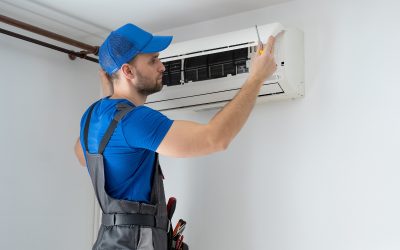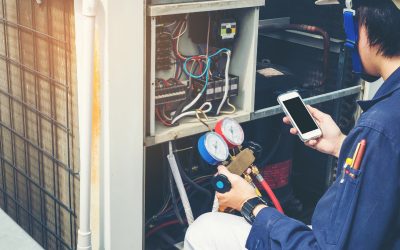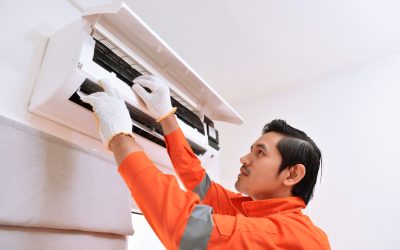When it comes to heating and cooling your home, most homeowners think of the air conditioner or furnace first. But your ductwork system plays an equally vital role. Think of it as the highway that delivers temperature-controlled air throughout your home. Without properly installed and sealed ducts, your HVAC system can lose efficiency, compromise indoor air quality, and increase utility bills.
For homeowners in Glendale, AZ, where seasonal heat puts extra stress on residential cooling systems, professional residential ductwork installation is essential for comfort, efficiency, and long-term system performance.
What Is Residential Ductwork?
Ductwork refers to the system of metal or flexible tubes that carry heated or cooled air from your HVAC unit to different areas in your home. A well-designed duct system ensures even airflow, reduces energy loss, and keeps every room at the right temperature.
There are different types of ductwork materials, including:
- Sheet metal ducts (galvanized steel or aluminum)
- Flexible ducting (insulated plastic and wire coils)
- Fiberboard ducts (compressed resin and fiberglass)
Each material type serves specific purposes based on home layout, budget, and climate demands. In hot areas like Glendale, sheet metal ducts are often preferred for their durability and resistance to heat.
A well-installed duct system can also improve air filtration. With cleaner air circulating through properly sealed ducts, your HVAC system won’t have to work as hard, which can lower maintenance needs and reduce dust accumulation throughout your home.
Signs You May Need New Ductwork
Not sure whether your existing ducts need replacing? Here are common signs that indicate it’s time for new ductwork:
1. Uneven Temperatures
If one room is freezing while another is warm, this often means your ducts are leaking or poorly designed.
2. High Energy Bills
Leaky or undersized ducts can cause your HVAC system to work harder, using more energy to keep your home comfortable.
3. Dusty or Musty Air
Old or damaged ducts can collect dust, mold, or allergens that spread throughout your home.
4.Loud HVAC Operation
Whistling, rattling, or banging noises when the system is on can signal duct damage or poor sealing.
5.Your Home Is 15+ Years Old
If your ductwork is original and over 15 years old, it’s worth inspecting. Aging ducts often have hidden issues that reduce efficiency.
6.Poor Airflow or HVAC Short Cycling
If you feel weak airflow from vents or notice your HVAC system frequently turning on and off, inefficient ductwork may be the cause.
What to Expect During Ductwork Installation
Getting new ductwork isn’t as invasive as you might think—especially when handled by a trained residential HVAC contractor. Here’s what a typical installation process looks like:
1.In-Home Evaluation
An HVAC technician visits your home to assess your current system, layout, airflow needs, and any problem areas. This ensures a custom ductwork design that fits your home.
2.System Design & Sizing
Based on square footage, room configuration, and insulation, the contractor will design a duct system that meets Manual D (Duct Design Manual) standards to optimize airflow and efficiency.
3.Removal of Old Ducts (If Needed)
Old or damaged ductwork is carefully removed to avoid disturbing insulation or structural components.
4.Installation of New Ducts
New ducts are cut, shaped, and installed in attics, crawl spaces, or interior walls, depending on your home layout. Proper placement is essential for optimizing airflow and avoiding bends or leaks.
5.Sealing & Insulation
All connections and seams are sealed with mastic or metal tape. Insulation is added to prevent energy loss, especially in attic-installed ducts. This step is especially important in Glendale, where ductwork is often exposed to extreme heat.
6.System Testing
The contractor performs airflow tests and inspects connections to ensure everything is working properly. They may also balance the airflow to ensure even distribution throughout your home.
Benefits of New Residential Ductwork
Investing in new ductwork offers numerous benefits for Glendale homeowners:
Better Energy Efficiency
Properly sealed and insulated ducts prevent up to 30% of air loss, significantly reducing your cooling costs during hot Arizona summers. Over time, these savings can help offset the cost of installation.
Improved Comfort
Enjoy consistent temperatures in every room and eliminate hot or cold spots that disrupt comfort. Balanced airflow also prevents pressure differences that can create drafty areas.
Healthier Indoor Air
New ducts reduce the risk of mold, dust, and allergen buildup, creating cleaner air for your family. This is especially important for households with asthma or allergy sufferers.
Quieter HVAC Operation
Well-fitted ducts reduce system noise, making your home more peaceful and comfortable. Noise-reducing duct designs and insulation can also dampen sound transfer between rooms.
Long-Term System Performance
Efficient airflow puts less strain on your HVAC system, helping it last longer and reducing the need for costly repairs. It also improves your system’s ability to maintain desired temperatures efficiently.
Boosted Property Value
Upgrading to modern, energy-efficient ductwork is an attractive feature for future buyers, especially in areas like Glendale where AC performance is a top priority.
Questions to Ask Your Installer
When hiring a residential HVAC contractor near Glendale, consider asking:
- Are you licensed and insured?
- Will the new ducts comply with Manual D standards?
- What type of duct material do you recommend for my home?
- Will my system need rebalancing after installation?
- Do you offer a warranty on ductwork?
- How long will the installation take?
A qualified contractor should be able to provide clear, confident answers and a detailed estimate of the work.
Glendale Climate & Ductwork Considerations
In Glendale’s desert climate, ductwork must withstand high attic temperatures, frequent system use, and dry air conditions. That’s why it’s crucial to:
- Use insulated ducting in unconditioned spaces
- Ensure ducts are sealed tightly to prevent leaks
- Schedule periodic inspections every 2–3 years to catch issues early
- Avoid low-quality flexible ductwork that can degrade in heat
Homes with older systems or recent renovations often benefit the most from updated ductwork.
Your ductwork may be out of sight, but it plays a major role in your home’s comfort and energy performance. For Glendale homeowners, choosing the right materials and contractor for residential ductwork installation can mean lower utility bills, cleaner air, and a better quality of life.
If you suspect your ducts are outdated, inefficient, or damaged, it may be time to schedule an inspection with a trusted local HVAC professional. Investing in well-designed ductwork today can keep your family cool, healthy, and comfortable for years to come.
Not only does updated ductwork make day-to-day life more comfortable, but it also provides long-term savings and peace of mind. In a city like Glendale, where climate extremes are the norm, making sure your home’s duct system is up to the challenge is one of the smartest improvements you can make.


